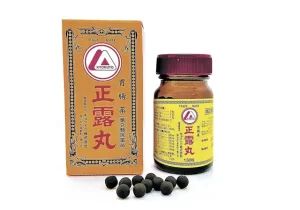Challenges and Prospects of TCR-T Treatment for Solid Tumors
- Gut Bacteria Enzymes Offer Hope for ABO Universal Blood Transfusions
- Well-Known Japanese Medicine Exposed for 30 Years of Data Falsification
- Oregon Reverses Course: From Decriminalization to Recriminalization of Drug Possession
- Why Lecanemab’s Adoption Faces an Uphill Battle in US?
- Yogurt and High LDL Cholesterol: Can You Still Enjoy It?
- WHO Releases Global Influenza Vaccine Market Study in 2024
Challenges and Prospects of TCR-T Treatment for Solid Tumors
- Was COVID virus leaked from the Chinese WIV lab?
- HIV Cure Research: New Study Links Viral DNA Levels to Spontaneous Control
- FDA has mandated a top-level black box warning for all marketed CAR-T therapies
- Can people with high blood pressure eat peanuts?
- What is the difference between dopamine and dobutamine?
- How long can the patient live after heart stent surgery?
Challenges and Prospects of TCR-T Treatment for Solid Tumors.
TCR-T cell therapy has shown very encouraging results in solid tumors, including cancers that do not respond well to current immunotherapies, such as sarcomas.
However, the complexity of cell and gene therapy strategies often brings some challenges.

Challenge One: Toxic Risk
Several toxicities associated with TCR-T cells have been described clinically. The potential toxicity to healthy tissue can be divided into non-tumor target toxicity (On-target off-tumor) and cross-reactivity (Off-target off-tumor).
In the early stage of TCR-T development , even the research of cell and gene therapy experts Steven Rosenberg and Carl June found that TCR-T has serious toxicity to healthy tissues.
On-target off-tumor toxicity is associated with target antigen expression in normal tissues, especially when the target antigen is a tumor-associated antigen(TAA)
In 2009, in a clinical trial of TCR-T cell therapy targeting MART-1 (DMF5) and gp100, patients in the study developed ocular and skin toxicity due to these two TAAs overexpressed on melanocytes and hearing loss [1] .

Fig. Tissue trafficking and target cell destruction in patients after infusion of TCR-transduced cells【1】
Another study described the onset of severe acute colitis in patients treated with TCR-T cells targeting CEA because CEA is expressed on normal intestinal cells [3] .
Cross-reactivity (Off-target off-tumor)refers to the TCR recognition of different antigens on normal cells, especially when the TCR sequence affinity is enhanced.
The occurrence of cross-reactivity was reported in two clinical trials of TCR-T cells published in 2013. The affinity-enhanced MAGE-A3 TCR-T cells also recognized epitopes derived from MAGE-A12 or TITIN proteins, resulting in the death of four patients [4,5] .
TCR affinity is a double-edged sword. It is generally believed that strong affinity can maintain T cell expansion, but too strong affinity may lead to premature exhaustion of T cells after recognizing the target antigen, and may also bypass thymic negative selection and produce cross-reaction with self-antigens (similar to engineering Means also TCR sequence modification).
Low-affinity engineered T cells showed a safer profile, but their antitumor responses were weaker.
Toxicity Prediction
Preclinical screening strategies from a decade ago were unable to identify and predict some of the potential cross-reactive toxicities of TCR-T.
Today’s analysis methods are becoming more and more advanced, but efficient toxicity prediction is still difficult, and preclinical safety assessment must also be paid attention to, especially the affinity-enhanced TCR sequence.
The evaluation of TCR-T-related toxicity includes testing the ability of candidate TCR-T cells to distinguish tumors from normal cells or tissues, etc., to ensure that they will not cause serious damage to normal tissues.
Relevant evaluation methods mainly include bioinformatics analysis of transcriptomics and proteomics databases, immunopeptidomics, and in vitro or ex vivo assays.
 Figure. Methods for evaluating potential toxicity of TCR-T cell therapy (A) Method for predicting On-target off-tumor (targeted epitopes in normal tissues); (B) Predicting Off-target off-tumor (crossover in normal tissues) Reactivity) method [1]
Figure. Methods for evaluating potential toxicity of TCR-T cell therapy (A) Method for predicting On-target off-tumor (targeted epitopes in normal tissues); (B) Predicting Off-target off-tumor (crossover in normal tissues) Reactivity) method [1]
Preventive solution
Screening TSAs with stronger tumor specificity than TAAs (such as neoantigens) or through TCR engineering (including affinity optimization, sequence modification, etc.) can reduce the risk of toxicity while improving antitumor efficacy.
The correct assembly of TCR is the key to the generation of TCR-T cells. TCR mismatches often lead to problems such as cross-reactivity toxicity. A variety of methods have been developed to avoid mismatching between exogenously introduced TCR and endogenous TCR. For example, in early studies, the constant regions of TCRα and TCRβ chains were replaced by mouse sources and human sources, etc. [6 ] .
 Figure. TCR optimization 【1】
Figure. TCR optimization 【1】
Another way to prevent TCR mismatching is to knock out the endogenous TCR .
Nowadays, many studies have achieved one-time knockout of multiple endogenous genes based on the CRISPR system, and the exogenous TCR transduction method has also achieved efficient gene insertion (including AAV, transposons) . These engineered TCR-T cells have shown increased functional affinity and reduced cross-reactivity in vivo.
In order to limit the toxicity of T cells to normal cells, a logical gating strategy can also be used in theory , which has been effectively applied in CAR-T/CAR-NK cell therapy.
Logical gating strategies are those in which T cell activation or inhibition depends on a combination of two signals rather than one.
For example, a logic gate “A AND B” triggers T cell activation only if the cell expresses two tumor antigens, A and B, at the same time.
In the “A NOT B” logic gate, cancer cells express gene A but not gene B to activate T cells, and gene B is a gene that must exist on normal cells, so normal cells will be protected.
However, compared to CAR, the logic gating approach is more challenging for TCR, especially for the “A AND B” gate, but recently A2 Bio has developed the “A NOT B” Tmod platform, based on which the ” CEA NOT HLA-1*02″ has been shown to be overall superior to TCR-T cells in efficacy and safety in in vitro studies.
The Tmod cells in the study include a CAR targeting CEA and a blocker module targeting HLA-A*02, and the Tmod strategy can also be extended for other types of tumor antigens and HLA alleles [8 ] .
Challenge Two : Drug Resistance
In addition to toxicity, the drug resistance challenge of TCR-T cell therapy affects the efficacy . Resistance exists in almost all types of cancer and in all anticancer drugs. Immunotherapy, like other antitumor drugs, is difficult to avoid the occurrence of drug resistance.
TCR-based immunotherapy also involves primary and secondary resistance mechanisms. The primary drug resistance mechanism may be mainly manifested as low or heterogeneous expression of target antigens in tumor cells.
However, for TCR-T cells, secondary or acquired resistance mechanisms are the main concern. Upregulation of immune checkpoint ligands on the surface of tumor cells tends to impair TCR-T cell expansion and function by activating immune checkpoint receptors on T cells, leading to T cell exhaustion.
The main escape mechanism of TCR-T cell therapy is the loss or reduction of MHC class I molecules on tumor cells, thereby preventing TCR-T cells from recognizing target epitopes.
Some combination regimens , including combinations that improve T cell homing (oncolytic viruses and radiation therapy)or increase infused T cell viability and persistence(checkpoint inhibitors, cytokines and cancer vaccines)may further increase TCR-T Therapeutic potential of cells to avoid T cell exhaustion and make cold tumors “hot” .
A clinical study combined MCPyV TCR-T cell therapy with PD-1/L1 antibody, promoted the expansion of T cells, and showed certain clinical remission in patients resistant to monotherapy [10 ] .
Furthermore, combining with approaches targeting the tumor microenvironment or modifying cytokines that are resistant to the hypoxic and acidic conditions prevalent in tumors could increase the efficiency of adoptive T cell therapy [11 ] .
Summary
With the development of TCR-T cell therapy as a promising therapeutic tool for solid tumors, challenges such as potential toxicity and drug resistance mechanisms are issues that need attention during development.
The optimization of TCR-T cell therapy can improve safety issues from the selection of TCR-T target antigens and TCR gene modification, and can also overcome the problem of drug resistance through combination therapy.
At the same time, with the development of concepts and technologies, new genetic engineering methods have emerged that will enhance the function of TCR-T cells, improve anti-tumor immune responses and reduce safety risks.
At present, the world’s first TCR-T cell therapy is approaching , and Adaptimmune’s Afami-cel (targeting MAGE-A4) has submitted a rolling marketing application for the treatment of advanced synovial sarcoma.
In patients with advanced synovial sarcoma (SS) or myxoid/round cell liposarcoma (MRCLS) treated with first-line systemic chemotherapy , the ORR was 36.5%, and the disease control rate was 88.4%.
The median duration of response in synovial sarcoma was 50.3 weeks. The overall safety was controllable, and the main adverse reactions were low-grade cytokine release syndrome and tolerable/reversible hematological toxicity.
Original link :
https://www.science.org/doi/10.1126/sciadv.adf3700
Other References:
1. TCR-engineered T cell therapy in solid tumors: State of the art and perspectives. DOI: 10.1126/sciadv.adf3700
2. Gene therapy with human and mouse T-cell receptors mediates cancer regression and targets normal tissues expressing cognate antigen. DOI: 10.1182/blood-2009-03-211714
3. T cells targeting carcinoembryonic antigen can mediate regression of metastatic colorectal cancer but induce severe transient colitis. DOI: 10.1038/mt.2010.272
4. Cancer Regression and Neurological Toxicity Following Anti-MAGE-A3 TCR Gene Therapy. DOI: 10.1097/CJI.0b013e3182829903
5. Cardiovascular toxicity and titin cross-reactivity of affinity-enhanced T cells in myeloma and melanoma. DOI: 10.1182/blood-2013-03-490565
6. Enhanced antitumor activity of murine-human hybrid T-cell receptor (TCR) in human lymphocytes is associated with improved pairing and TCR/CD3 Stability. Cancer Res. 66, 8878–8886 (2006).
7. CRISPR-based gene disruption and integration of high-avidity, WT1-specific T cell receptors improve antitumor T cell function. Sci. Transl. Med. 14, eabg8027 (2022).
8. Robust In Vitro Pharmacology of Tmod, a Synthetic Dual-Signal Integrator for Cancer Cell Therapy. DOI: 10.3389/fimmu.2022.826747
9. T-cell therapy using interleukin-21–primed cytotoxic T-cell lymphocytes combined with cytotoxic T-cell lymphocyte antigen-4 blockade results in long-term cell persistence and durable tumor regression.
10. Merkel polyoma virus specific T-cell receptor transgenic T-cell therapy in PD-1 inhibitor refractory Merkel cell carcinoma. DOI: 10.1200/JCO.2022.40.16_suppl.9549
11. IL-2 is inactivated by the acidic pH environment of tumors enabling engineering of a pH-selective mutein. DOI: 10.1126/sciimmunol.ade5686
Challenges and Prospects of TCR-T Treatment for Solid Tumors
(source:internet, reference only)
Disclaimer of medicaltrend.org
Important Note: The information provided is for informational purposes only and should not be considered as medical advice.



